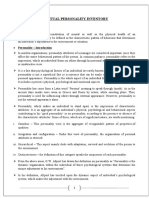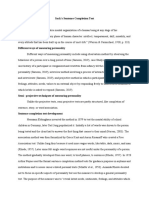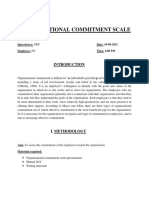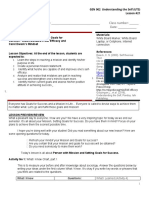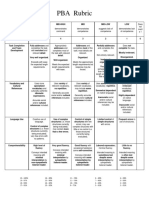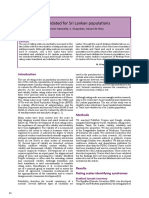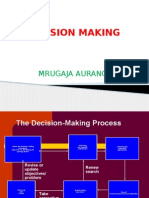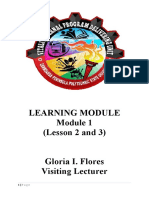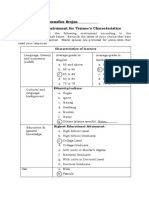100% found this document useful (1 vote)
2K views12 pagesOcs Dms
The document describes an organizational commitment scale developed by Upinder Dhar, Prashant Mishra, and D.K. Srivastava. It then provides an example of the scale being used to measure the commitment of a merchant navy captain, Harish Kumar, to his organization V Ships Monaco.
Harish scored high overall in organizational commitment. He scored high in concern for the organization and normal in identification with the organization. His high scores reflect his dedication to his job and loyalty to the organization despite challenges. The results indicate Harish feels strongly about the success of the organization and is highly satisfied in his role.
Uploaded by
rhea dhirCopyright
© © All Rights Reserved
We take content rights seriously. If you suspect this is your content, claim it here.
Available Formats
Download as DOCX, PDF, TXT or read online on Scribd
100% found this document useful (1 vote)
2K views12 pagesOcs Dms
The document describes an organizational commitment scale developed by Upinder Dhar, Prashant Mishra, and D.K. Srivastava. It then provides an example of the scale being used to measure the commitment of a merchant navy captain, Harish Kumar, to his organization V Ships Monaco.
Harish scored high overall in organizational commitment. He scored high in concern for the organization and normal in identification with the organization. His high scores reflect his dedication to his job and loyalty to the organization despite challenges. The results indicate Harish feels strongly about the success of the organization and is highly satisfied in his role.
Uploaded by
rhea dhirCopyright
© © All Rights Reserved
We take content rights seriously. If you suspect this is your content, claim it here.
Available Formats
Download as DOCX, PDF, TXT or read online on Scribd
/ 12
















